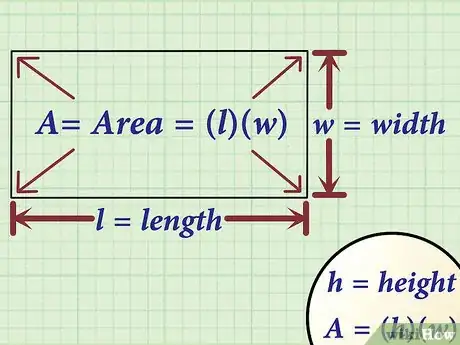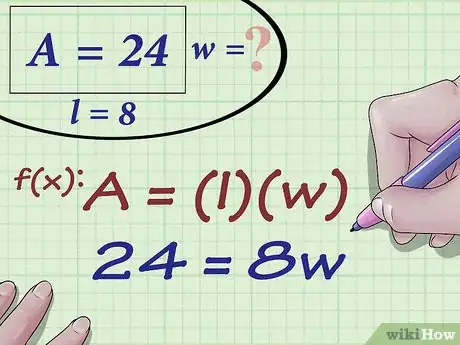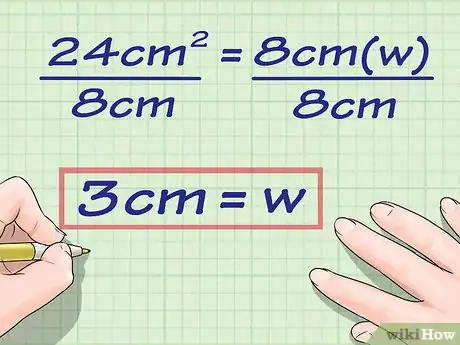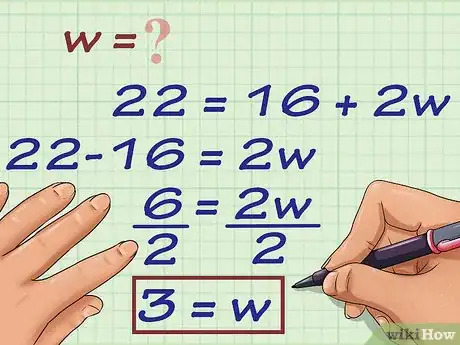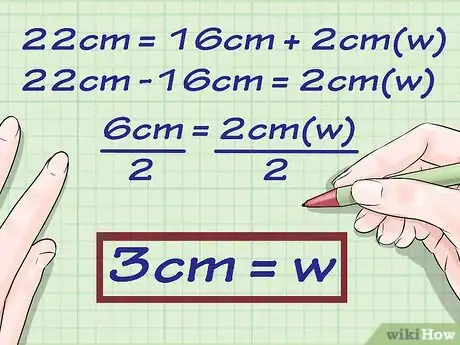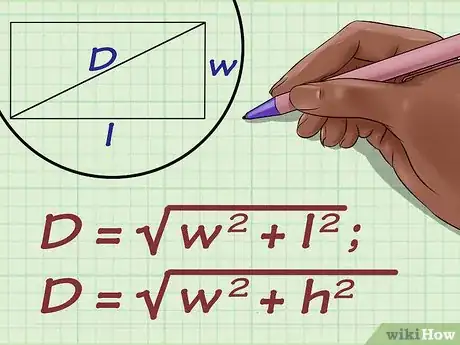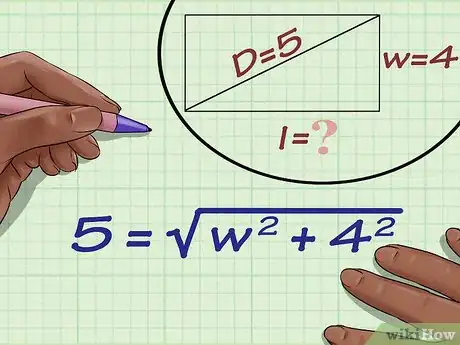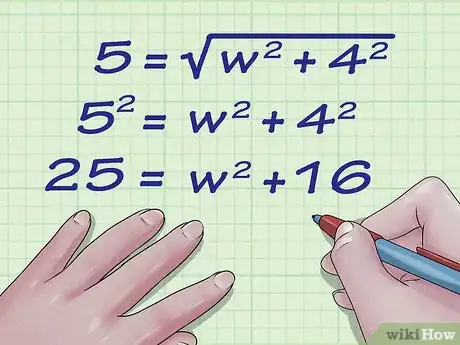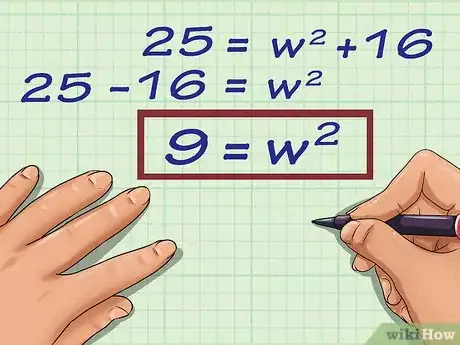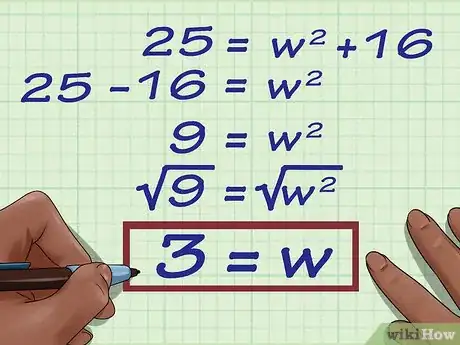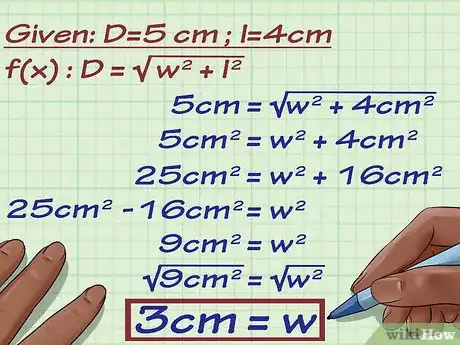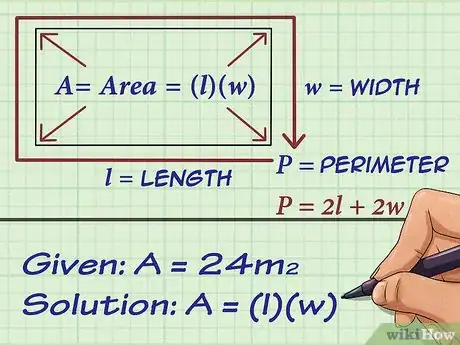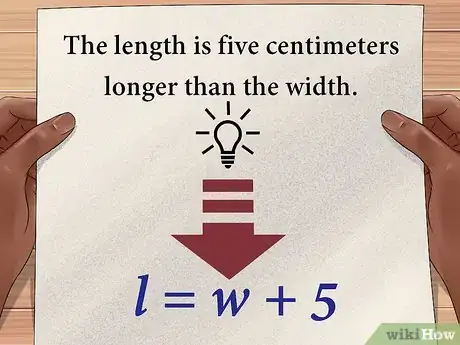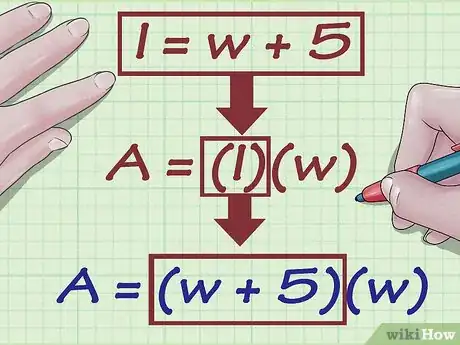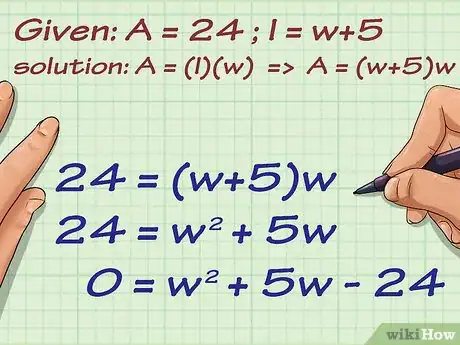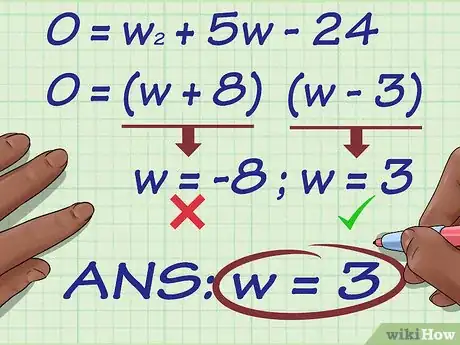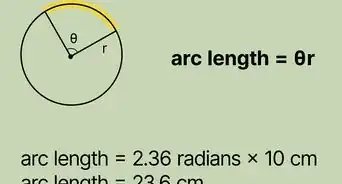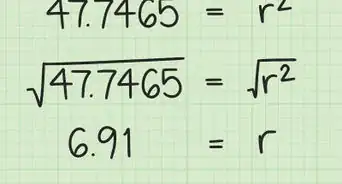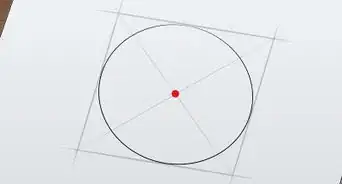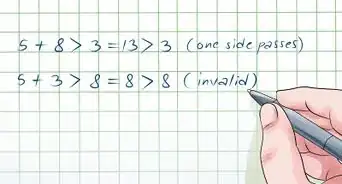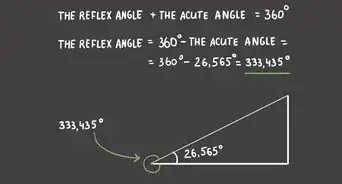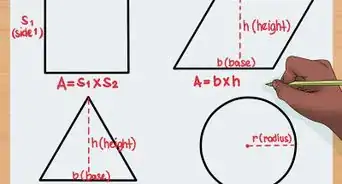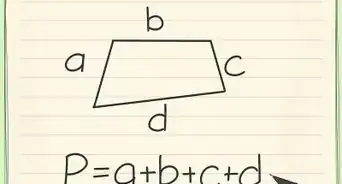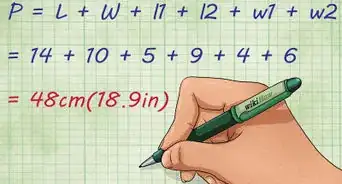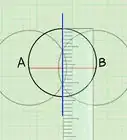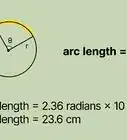This article was co-authored by wikiHow Staff. Our trained team of editors and researchers validate articles for accuracy and comprehensiveness. wikiHow's Content Management Team carefully monitors the work from our editorial staff to ensure that each article is backed by trusted research and meets our high quality standards.
There are 10 references cited in this article, which can be found at the bottom of the page.
This article has been viewed 592,953 times.
Learn more...
There are numerous ways to find a missing dimension of a rectangle, and the method you use will depend on what information you already have. As long as you know the area or perimeter, as well as the length of one side of the rectangle (or the relationship between the length and width), you can find a missing dimension. The properties of a rectangle are such that you can use these methods for finding the width or length.
Steps
Using Area and Length
-
1Set up the formula for area of a rectangle. The formula is , where equals the area of the rectangle, equals the length of the rectangle, and equals the width of the rectangle.[1]
- This method will only work if you are given the area and length of the rectangle.
- You might also see the formula written as , where equals the height of the rectangle and is used instead of length.[2] These two terms refer to the same measurement.
-
2Plug the values for area and length into the formula. Make sure you substitute for the correct variables.
- For example, if you are trying to find the width of a rectangle that has an area of 24 square centimeters, and a length of 8 centimeters, your formula will look like this:
Advertisement - For example, if you are trying to find the width of a rectangle that has an area of 24 square centimeters, and a length of 8 centimeters, your formula will look like this:
-
3Solve for . To do this, you need to divide each side of the equation by the length.[3]
- For example, in the equation , you would divide each side by 8.
- For example, in the equation , you would divide each side by 8.
-
4Write your final answer. Don’t forget to include the unit of measurement.
- For example, for a rectangle with an area of and a length of , the width would be .
Using Perimeter and Length
-
1Set up the formula for perimeter of a rectangle. The formula is , where equals the perimeter of the rectangle, equals the length of the rectangle, and equals the width of the rectangle.[4]
- This method will only work if you are given the perimeter and length of the rectangle.
- You might also see the formula written as , where equals the height of the rectangle and is used instead of length.[5] The variables and refer to the same measurement, and the distributive property dictates that these two formulas, although arranged differently, will give you the same result.
-
2Plug the values for perimeter and length into the formula. Make sure you substitute for the correct variables.[6]
- For example, if you are trying to find the width of a rectangle that has a perimeter of 22 centimeters, and a length of 8 centimeters, your formula will look like this:
- For example, if you are trying to find the width of a rectangle that has a perimeter of 22 centimeters, and a length of 8 centimeters, your formula will look like this:
-
3Solve for . To do this, you need to subtract the length from each side of the equation, then divide by 2.
- For example, in the equation , you would subtract 16 from each side, then divide by 2.
- For example, in the equation , you would subtract 16 from each side, then divide by 2.
-
4Write your final answer. Don’t forget to include the unit of measurement.
- For example, for a rectangle with a perimeter of and a length of , the width would be .
Using the Diagonal and Length
-
1Set up the formula for the diagonal of a rectangle. The formula is , where equals the length of the rectangle’s diagonal, equals the length of the rectangle, and equals the width of the rectangle.[7]
- This method will only work if you are given the length of the diagonal and the length of the side of the rectangle.
- You might also see the formula written as , where equals the height of the rectangle and is used instead of length.[8] The variables and refer to the same measurement.
-
2Plug the values for the diagonal and side length into the formula. Make sure you substitute for the correct variables.
- For example, if you are trying to find the width of a rectangle that has a diagonal length of 5 centimeters, and a side length of 4 centimeters, your formula will look like this:
-
3Square both sides of the formula. You need to do this to get rid of the square root sign, which makes isolating the width variable easier.[9]
- For example:
- For example:
-
4Isolate the variable. To do this, you need to subtract the squared length from each side of the equation.
- For example, in the equation , you would subtract 16 from each side.
- For example, in the equation , you would subtract 16 from each side.
-
5Solve for . To do this, you need to find the square root of each side of the equation.
- For example:
- For example:
-
6Write your final answer. Don’t forget to include the unit of measurement.
- For example, for a rectangle with a diagonal length of and a side length of , the width would be .
Using Area or Perimeter and Relative Length
-
1Set up the formula for area or perimeter of a rectangle. Which formula you use will depend on which measurement you are given. If you are given the area, set up the area formula. If you are given the perimeter, set up the perimeter formula.
- If you do not know the area or the perimeter, or the relationship between the length and the width, you cannot use this method.
- The formula for area is .[10]
- The formula for perimeter is .[11]
- For example, you might know that the area of a rectangle is 24 square centimeters, so you would set up the formula for area of a rectangle.
-
2Write the expression that describes the relationship between the length and the width. Write your expression in terms of what equals.
- The relationship might be given by stating how many times bigger one side is than the other, or how many units more or less it is.
- For example, you might know that the length is five centimeters longer than the width. Your expression for the length is then .
-
3Replace the variable in your area (or perimeter) formula with the expression for length. Your formula should now only contain the variable , which means you can solve for the width.
- For example, if you know that area is 24 square centimeters, and that , your formula will look like this:
- For example, if you know that area is 24 square centimeters, and that , your formula will look like this:
-
4Simplify the equation. Your simplified equation might take on various forms, depending on the relationship between the length and the width, and depending on whether you are working with area or perimeter. Think about setting up an equation that allows you to solve for in the simplest way.
- For example, you can simplify to .
-
5Solve for . Again, how you solve for will depend on your simplified equation. Use the basic rules of algebra and geometry to solve.[12]
- You might need to use addition or division to solve, or you might need to factor a quadratic equation or use the quadratic formula to solve.
- For example, can be factored as follows:
You will then have two possible solutions for : or . Since a rectangle cannot have a negative width, you can eliminate -8. So your solution is .
Community Q&A
-
QuestionHow would I find width when I've been given volume, height, and length?
 Blankless XCommunity AnswerYou divide the volume by the height and the length. You could multiply the height and the length with each other first before dividing. W = V / (H*L).
Blankless XCommunity AnswerYou divide the volume by the height and the length. You could multiply the height and the length with each other first before dividing. W = V / (H*L). -
QuestionThe length of a rectangle field is twice its breadth. Its perimeter is 400m. How do I find the length and breadth?
 DonaganTop AnswererLet B equal the breadth. Then 2B equals the length. Write an equation in B, stating that the perimeter is equal to twice the breadth plus twice the length. Solve for B.
DonaganTop AnswererLet B equal the breadth. Then 2B equals the length. Write an equation in B, stating that the perimeter is equal to twice the breadth plus twice the length. Solve for B. -
QuestionHow do I find the area of a rectangle if width and perimeter are given?
 DonaganTop AnswererDouble the width, and subtract that from the perimeter. Then divide that number by two, which gives you the length of the rectangle. Then, multiply the result by the width to get the area.
DonaganTop AnswererDouble the width, and subtract that from the perimeter. Then divide that number by two, which gives you the length of the rectangle. Then, multiply the result by the width to get the area.
References
- ↑ http://www.coolmath.com/reference/rectangles#The_area_of_a_rectangle
- ↑ http://www.mathopenref.com/rectanglearea.html
- ↑ https://www.cuemath.com/measurement/area-of-rectangle/
- ↑ http://www.virtualnerd.com/middle-math/geometry-measurement/rectangle-perimeter-area/rectangle-perimeter-example
- ↑ http://www.mathopenref.com/rectangleperimeter.html
- ↑ https://www.varsitytutors.com/basic_geometry-help/how-to-find-the-perimeter-of-a-rectangle
- ↑ http://www.coolmath.com/reference/rectangles#The_diagonal_of_a_rectangle
- ↑ http://www.mathopenref.com/rectanglediagonals.html
- ↑ https://www.varsitytutors.com/basic_geometry-help/how-to-find-the-length-of-the-diagonal-of-a-rectangle
About This Article
To find the width of a rectangle, use the formula: area = length × width. Just plug the area and length of the rectangle into the formula and solve for the width. If you don't have the area, you can use the rectangle's perimeter instead. In that case, you would use the formula: perimeter = 2 × length plus 2 × width. Plug the perimeter and the length into the formula and solve for the width. To learn how to find the width of a rectangle using the diagonal and the length, scroll down!
